For most dogs, amputation isn’t the end of their story. It’s a turning point. Whether the loss of a limb happens due to trauma, cancer, or a congenital condition, dogs tend to adapt with speed and grace. Their resilience is incredible. But even when they seem fine on the outside, there’s more going on beneath the surface.
That’s because limb loss permanently alters the way a dog moves. Their body compensates immediately, shifting load, adjusting posture, and relying more heavily on remaining joints and muscles. These adaptations, while necessary, can become problematic over time if they go unsupported.
By combining rehabilitation therapy with proactive care, and custom orthoses when appropriate, we can help dogs live stronger, more balanced lives after amputation and during amputation surgery recovery.

Written by:
Dr. Emily Hall DVM, CCRT, CPAT-KA
Why Amputation May Be Necessary
There are several reasons a veterinarian might recommend amputation:
- Irreparable trauma or fracture
- Nerve damage
- Chronic infection or non-healing wounds
- Bone tumors such as osteosarcoma
- Birth defects that impair function
In many of these cases, removing the limb provides the best chance at comfort, mobility, and longevity. And while that may feel like a loss at first, dogs are remarkably quick to adjust and often resume activity within days of surgery.
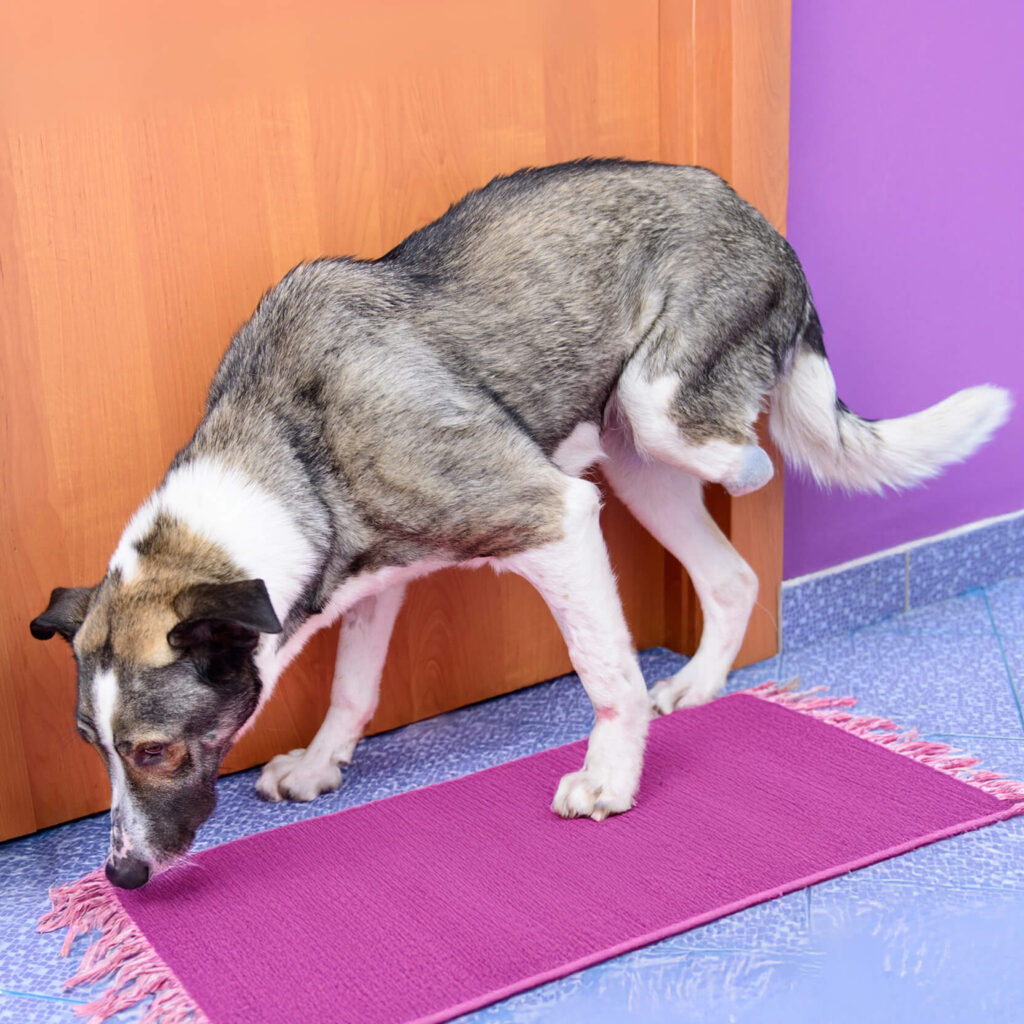
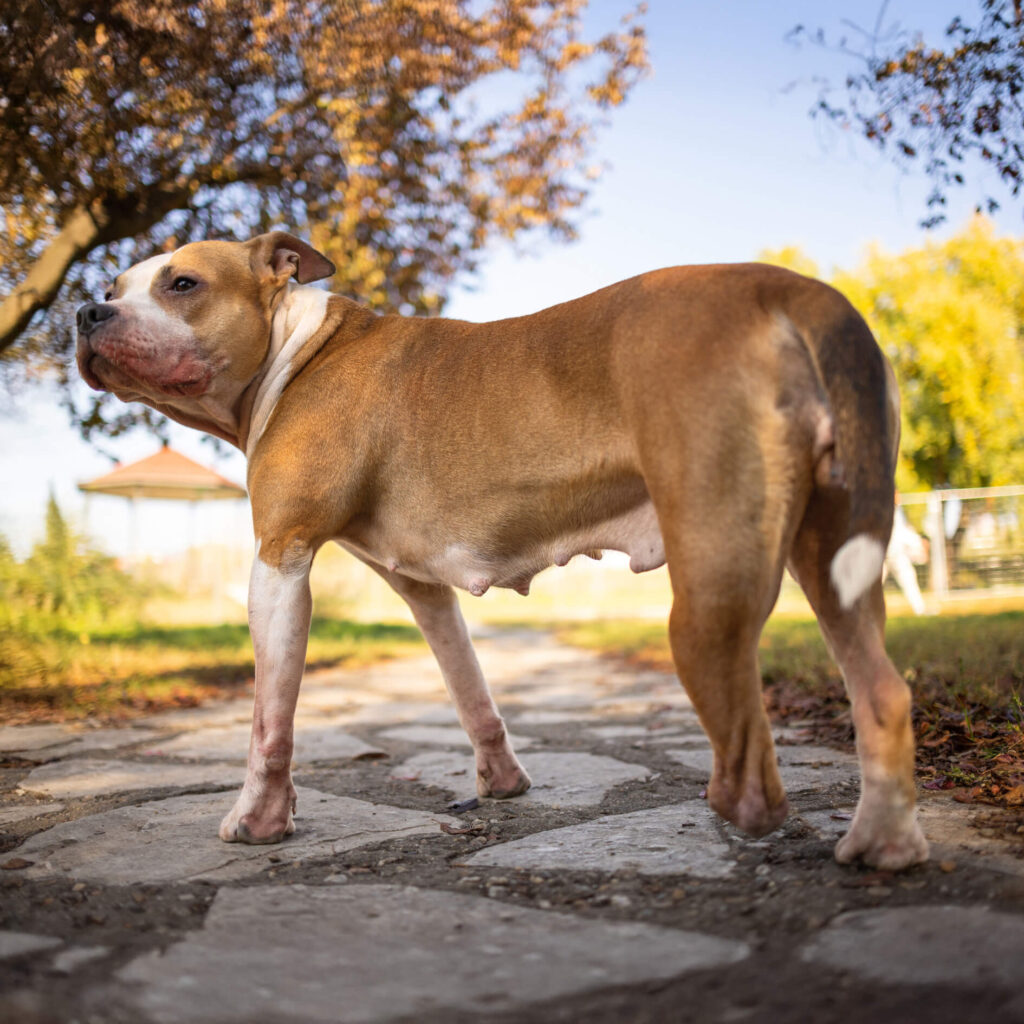
Understanding the Types of Amputation in Dogs
Full Limb Amputation
Most amputations in dogs are complete, meaning the entire limb is removed at the shoulder or hip joint. This approach typically allows for a more comfortable and balanced recovery.
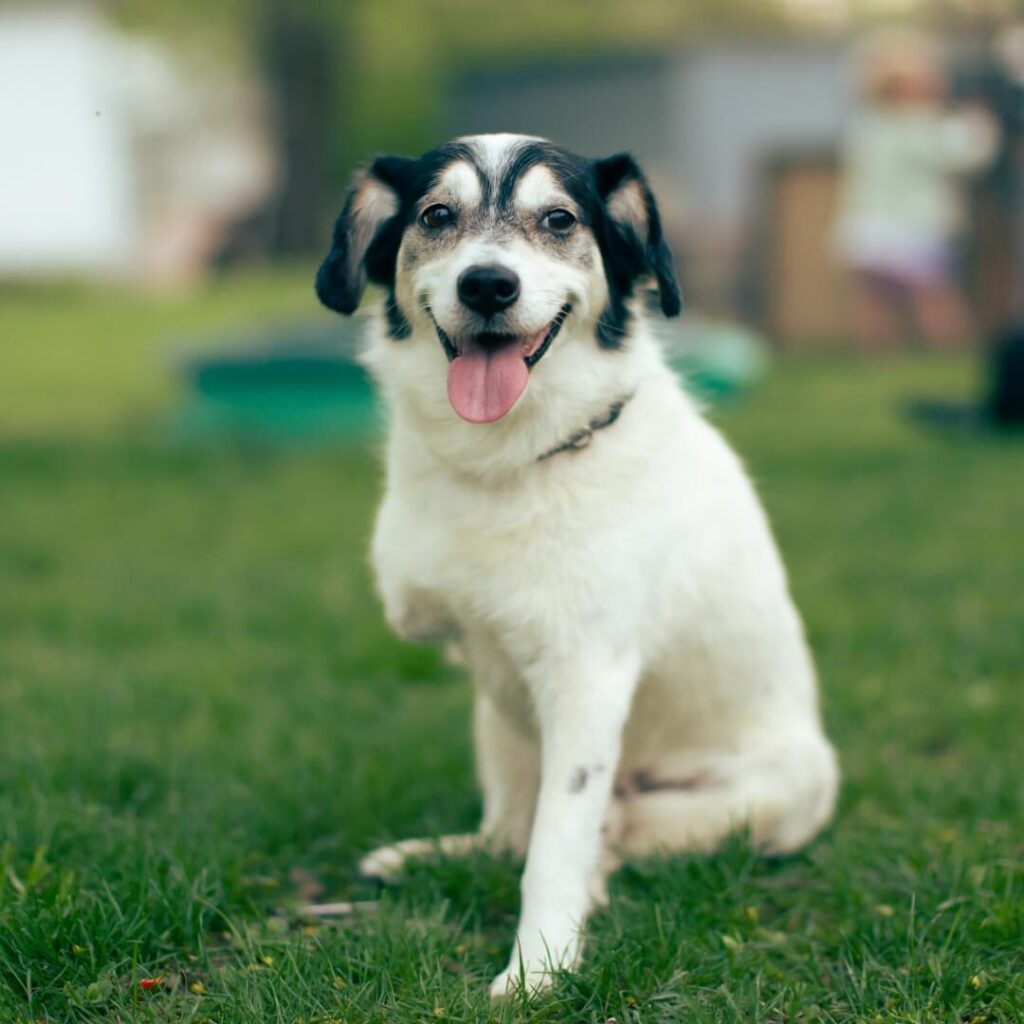
Partial Limb Amputation
Partial limb amputations, where part of the leg is retained, are less common. They’re typically considered when dog prosthetics may be a viable option. Generally, at least 40 to 50 percent of the lower limb must remain to support prosthetic use. That said, prosthetics aren’t right for every case and they come with their own consistent care requirements.
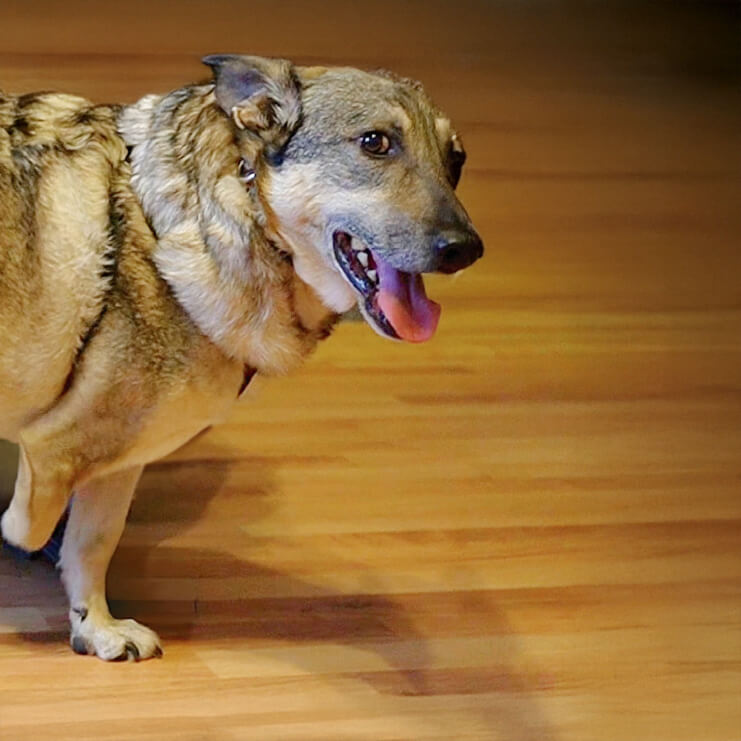
Your veterinary team will guide you through these decisions based on what is medically appropriate and aligned with your dog’s long-term well-being.
The Early Amputation Surgery Recovery Phase
Recovery usually starts quickly. Most dogs go home within a day or two, with pain medication and instructions for rest. It’s important to provide a soft, quiet place to relax with non-slip flooring and limited access to stairs.
In the first week, some dogs need help with balance, especially during bathroom breaks. A towel sling or supportive harness can make this easier for both of you. Helping rebuild their confidence can be an important step, too!
It’s also worth watching for signs of nerve-related discomfort, such as restlessness, panting, or sensitivity to touch. These may indicate a need for a different type of medication, which your veterinarian can adjust if needed.

Adapting Isn’t the Same as Recovering
Dogs are amazing at adapting, but adaptation often comes with trade-offs. When one leg is removed, the rest of the body takes on new strain. The remaining limbs absorb more impact and the spine, shoulders, or hips may begin to compensate in subtle but significant ways.
For example:
- The carpus, or wrist, may begin to drop or turn inward under extra load (carpal hyperextension)
- Spinal or pelvic curvature may be noted, due to shifting posture
- Head bobbing during movement may indicate fatigue and/or loss of core stability
- Or even as simple as noticing they cannot stand still without wanting to sit or lay down, the hind limb amputee may be noticed going from a normal gait to a more hopping/bouncing gait, and many other small signs
These signs are common and not cause for alarm, but they are early indicators that the body is adjusting in ways that will benefit from support.
Why Rehabilitation Matters
Rehabilitation therapy helps dogs recover with intention, not just instinct. A canine rehab therapist can guide your dog through strength training, balance work, and stretching techniques that protect joints, restore confidence, and prevent long-term strain.
They can also teach you how to:
- Support at home with gentle massage for tired muscles
- Monitor posture and weight shifting
- Adjust daily activities to keep your dog moving comfortably
Rehab is most powerful when started early, but it’s valuable at any point in the journey.
Staying Ahead of Compensation
Managing a tripod dog’s health is about more than celebrating how well they adapt. It’s about staying a step ahead of the physical costs of that adaptation.
Weight Management
One of the most effective ways to support your dog long-term is through proper nutrition. Carrying even a small amount of excess weight can increase stress on overworked joints and soft tissue structures. Keeping your dog lean reduces strain and helps delay the onset of compensatory injury or arthritis. Your veterinary team can help you identify a healthy weight range and adjust feeding strategies over time.
Veterinary-recommended Joint Supplements
Veterinary-recommended joint supplements can also play a role. Starting a chondroprotective agent early can help preserve cartilage health and support joint comfort before signs of wear or instability develop. These products, including compounds like omega-3s, glucosamine, and other targeted nutrients, are most effective when introduced as part of a preventive plan rather than reactive care.
Vet or Rehabilitation Professional Support
Together, weight management and supplementation form the foundation of long-term joint health and are most effective when guided by a close partnership with your vet or rehabilitation professional.
Proactive Support with Custom Orthoses
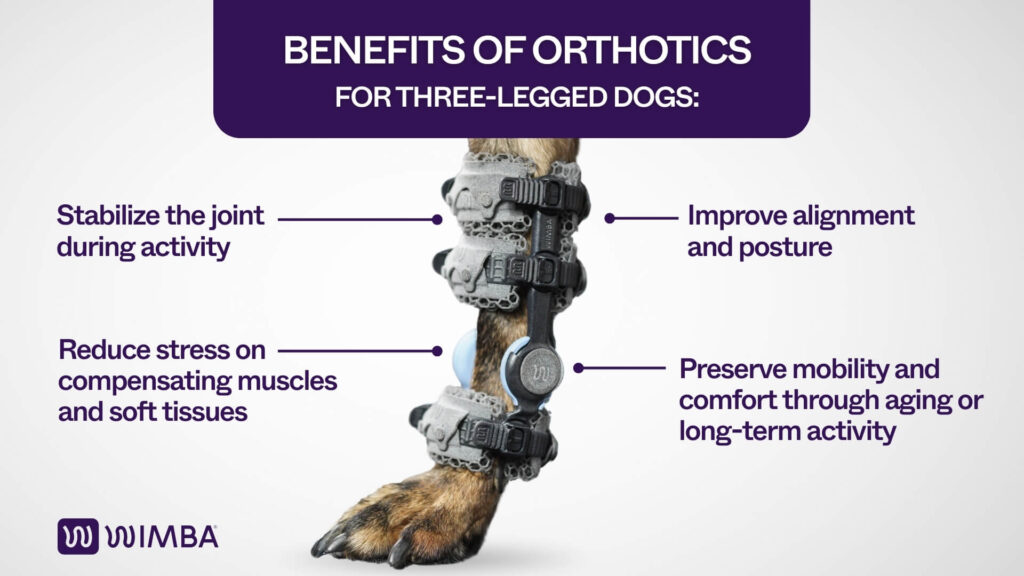
As your dog adjusts, the remaining limbs take on new demands. That extra workload, especially in the lower joints like the carpus or tarsus, can lead to soft tissue fatigue, joint instability, or compensation-related injury over time.
Custom orthoses from WIMBA are designed to provide targeted, non-invasive support for these high-stress joints. For tripod dogs showing signs of overuse, fatigue, or early joint hyperextension, a well-fitted orthosis can:
- Stabilize the joint during activity
- Improve alignment and posture
- Reduce stress on compensating muscles and soft tissues
- Preserve mobility and comfort through aging or long-term activity
Orthoses work best as part of a comprehensive care plan that includes rehabilitation, veterinary follow-up, and ongoing assessment of your dog’s movement patterns.
Amputation Surgery Recovery – Final Thoughts
Dogs don’t dwell on what’s changed. They move forward. Our job is to make sure they do so with strength, comfort, and support.
A limb amputation may change your dog’s movement, but it doesn’t change their ability to live a full and joyful life. With thoughtful planning, rehabilitation therapy, sound nutrition, and custom orthotic support where appropriate, dogs can do far more than just adapt and amputation surgery recovery is streamlined. They can thrive.
Download WIMBA Canine Pain Assessment Checklist
Are you worried you may be missing silent pain in your canine companion? Get clarity and don’t wait to hear what your friend may be trying to share. WIMBA’s veterinarian and Certified Canine Rehabilitation Therapist has put together this helpful assessment you can do in the comfort of your home.

Medical Disclaimer: All information on this website is intended for instruction and information purposes only, The authors are not responsible for any harm or injury that may result. Significant injury risk is possible if you do not follow the due diligence and seek suitable professional advice about your dog’s specific situation. No guarantees of specific results are expressly made or implied on this website.






